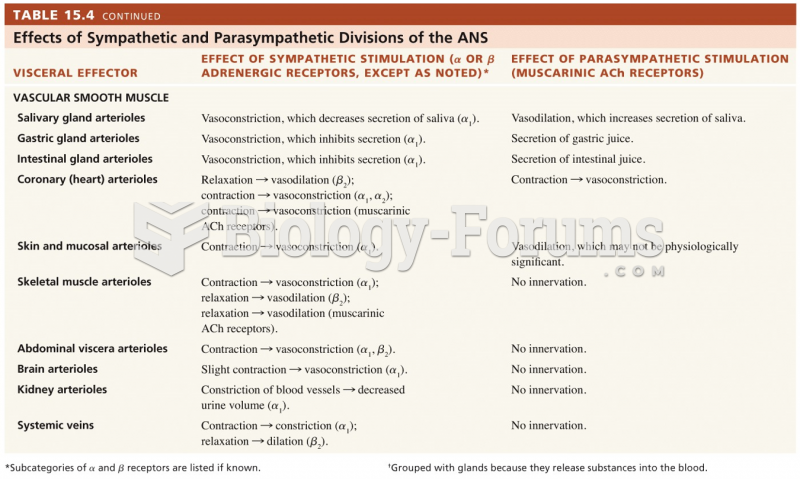Answer to Question 1
2
Rationale 1:Nausea is incorrect because this is a side effect of chemotherapy.
Rationale 2:Increased red blood cells is not a side effect of chemotherapy, and should not be included in teaching.
Rationale 3:Hair loss is incorrect because this is a side effect of chemotherapy.
Rationale 4:Decreased white blood cells is incorrect because this is a side effect of chemotherapy.
Global Rationale: Increased red blood cells is not a side effect of chemotherapy, and should not be included in teaching. Nausea is incorrect because this is a side effect of chemotherapy. Hair loss is incorrect because this is a side effect of chemotherapy. Decreased white blood cells is incorrect because this is a side effect of chemotherapy.
Answer to Question 2
2
Rationale 1:Cyclophosphamide (Cytoxan), an alkylating agent, damages hair follicles, causing alopecia, although this effect is usually reversible. The statement reflects that the client misunderstands the side effect of the medication.
Rationale 2: Cyclophosphamide (Cytoxan), an alkylating agent, damages hair follicles, causing alopecia, although this effect is usually reversible. This statement reflects understanding about the medication and the side effect of the medication.
Rationale 3:Cyclophosphamide (Cytoxan), an alkylating agent, damages hair follicles, causing alopecia, although this effect is usually reversible. The statement reflects misunderstanding of the medication.
Rationale 4:Wigs can exacerbate the alopecia, but that is dependent upon the client and the situation. The statement does not support understanding of the teaching of the medication.
Global Rationale: Cyclophosphamide (Cytoxan), an alkylating agent, damages hair follicles, causing alopecia, although this effect is usually reversible.







